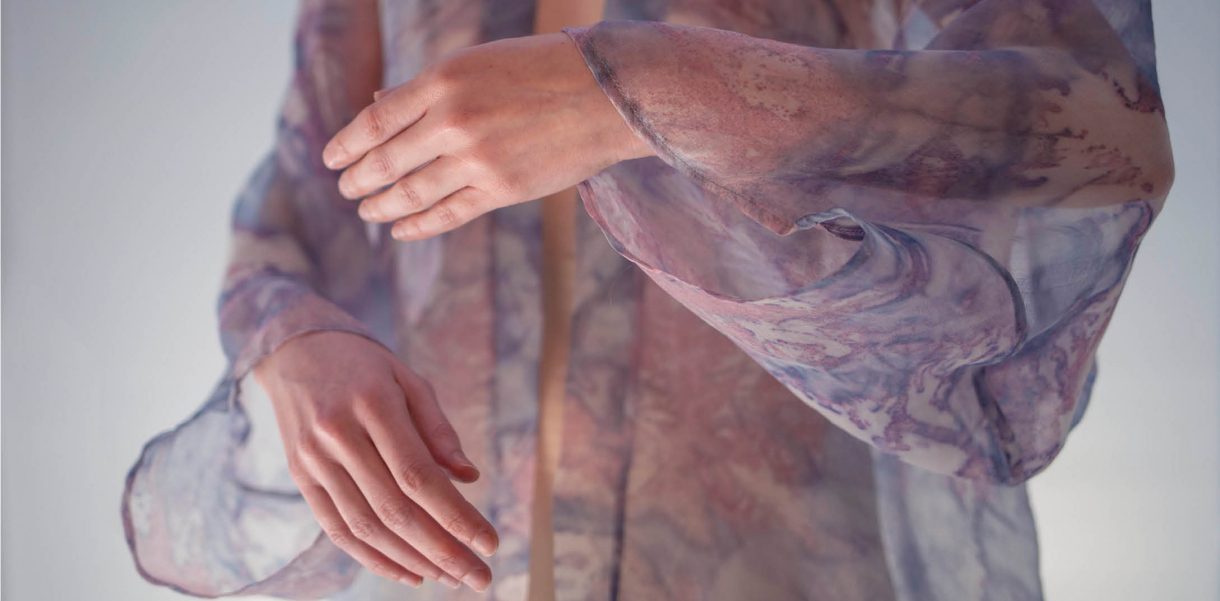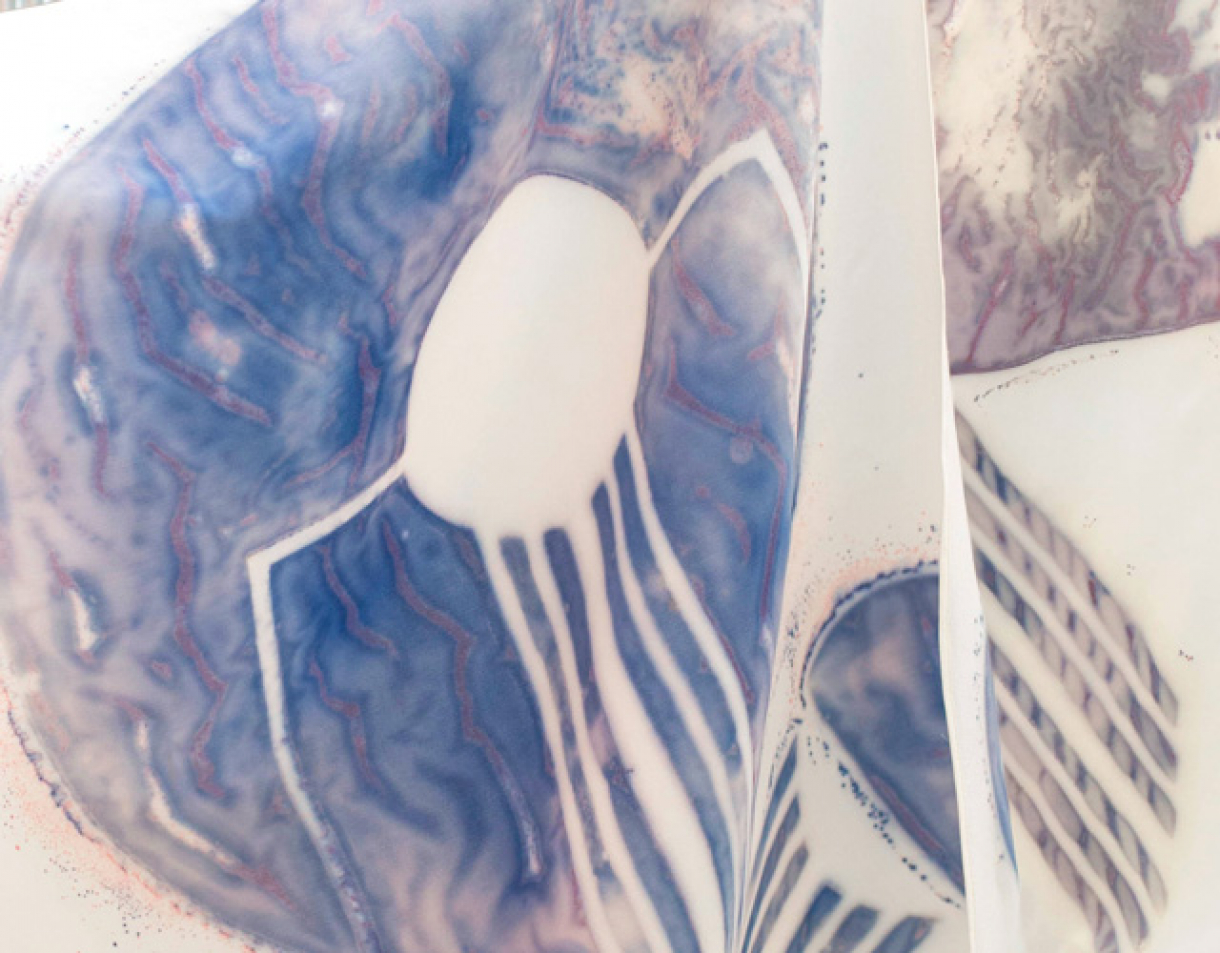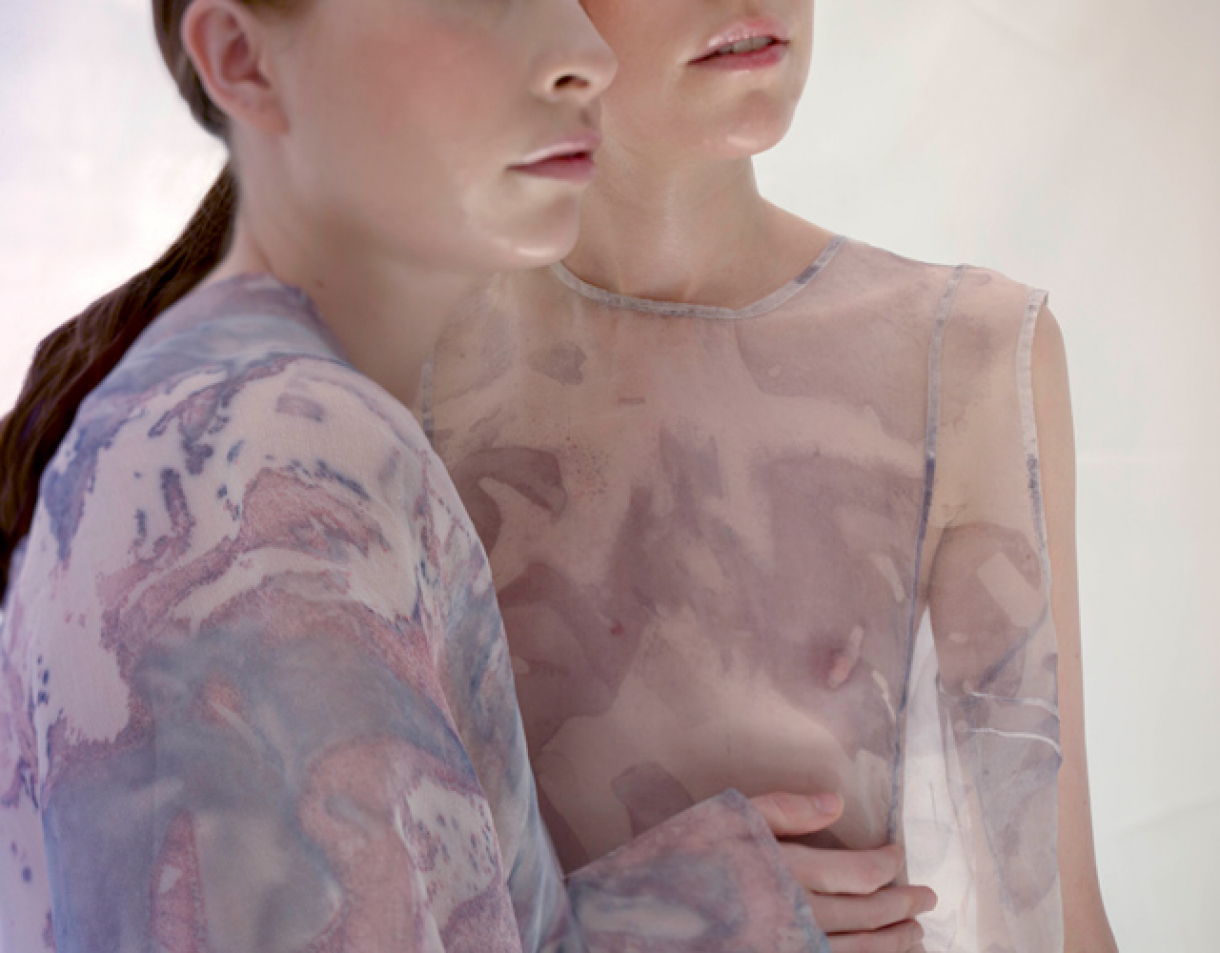The fashion industry is one of the most polluting in the world, with most of the harm occurring at the finishing and dyeing stages. Eliminating toxic waste and reducing water use are key to sustainability but how does one tackle such a vast and deep-rooted issue?
London based Faber Futures are at the forefront of a new fashion revolution: they're using bacteria to dye textiles. The team has developed a suite of dyeing methods with a pigment-producing bacteria called Streptomyces coelicolor. An organism that produces antibiotics, geosmin (the smell of rain) and gives beetroot its flavour.
“When grown directly on to textiles, the bacteria generate pigment molecules that attach themselves to fibres without the use of chemicals and with 500 times less water than normal industrial processes,” says Natsai Audrey Chieza, Founder of Faber Futures.
Her pioneering project Scale, Void, Assemblage 001 is a collection of “textile artefacts” featuring graphic textile prints, larger-scale textile patterns and a bespoke engineered print for clothing. 'Scale' explores how these techniques can dye large amounts of fabric. 'Void' is the world's first engineered print made by bacteria. And, 'Assemblage 001', also a world first, is a garment designed to be pigmented by S.coelicolor.
“The next phase of our ongoing R&D is to digitise all of our protocols.”
While these unique dyeing methods were initially explorative, the lab can now use digital visualisations to design the patterns before they grow them.
“The next phase of our ongoing R&D is to digitise all of our protocols,” says Chieza. “This will enable us to streamline our production and iterate more rapidly for our collaborators and partners.”
With sustainable production and a stunning aesthetic, investors and the industry are jumping in. Brands, in particular, are now looking to embed their own identity into biofabrication design strategies, according to Chieza.
Outside of the industry, Project Coelicolor has spurred others to explore bacterial dyes and has encouraged leading voices in the Circular Economy and Biomimicry spaces to re-think biology, "not only as a phenomenon to be mimicked but as a co-actor that can be integrated with our environment".
Designers: Faber Futures - United Kingdom
UN SDGs: Responsible production and consumption & Climate action
Project Coelicolor from The Index Project on Vimeo. Music: Lee Rosevere









